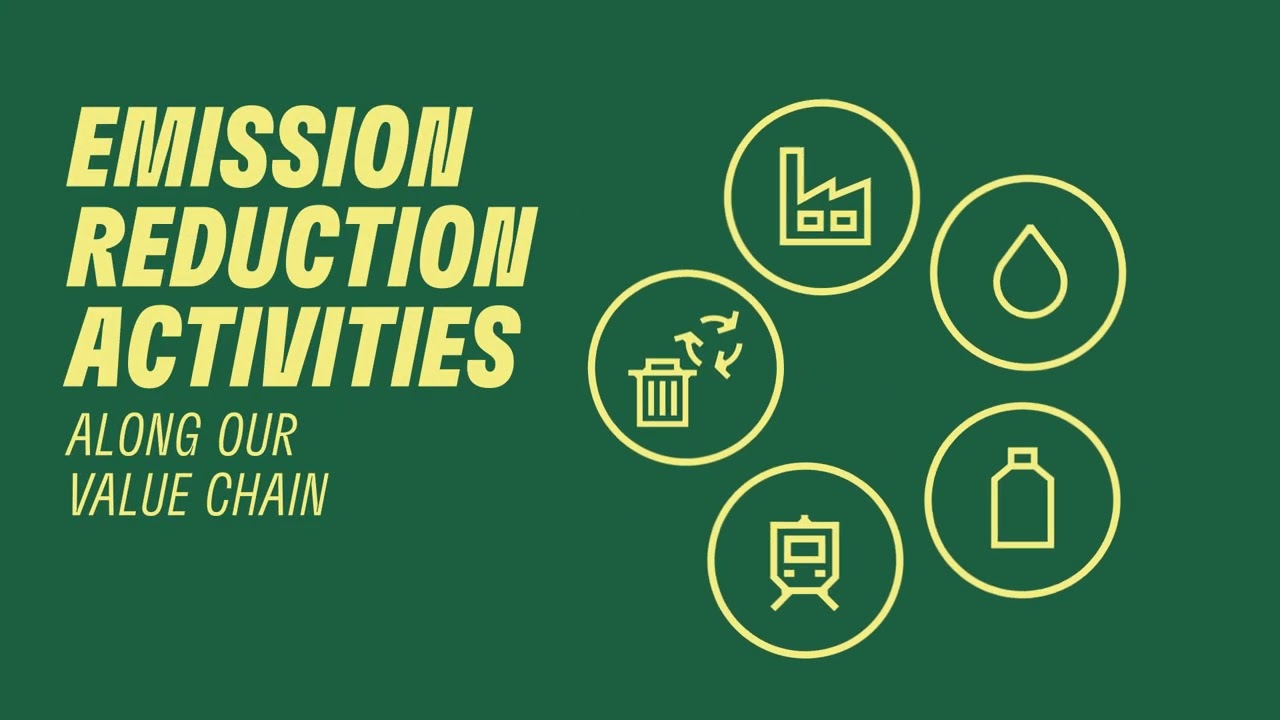Learn more about Henkel Brands & Businesses in UK & Irelands: Includes useful information about the brands, technologies and latest innovations in our business areas: Henkel Adhesive Technologies and Henkel Consumer Brands.
CLIMATE

Emissions of carbon dioxide and other greenhouse gases are responsible for climate change and global warming. Limiting these emissions is one of the biggest challenges humankind has ever faced. Therefore, Henkel has defined a net-zero roadmap in 2024, substantially extending its targets for emissions reduction along the value chain. To achieve net-zero, the company has set the following targets:
- Reduce absolute scope 1 and 2 greenhouse gas (GHG) emissions by 42 percent by 2030 (base year 2021)
- Reduce absolute scope 3 GHG emissions by 30 percent by 2030 (base year 2021)
- Reduce absolute scope 1, 2 and 3 GHG emissions by 90 percent by 2045 (base year 2021)
Committed to climate protection
A few degrees might not sound like much, but it makes a big difference to the future of our planet. To limit global warming to 1.5 degrees Celsius – and meet the commitment made in the United Nations’ Paris Agreement on climate change – global emissions must be brought to net-zero by 2050. Achieving this ambitious target will only be possible if governments and companies embrace this challenge as an opportunity to drive innovation and explore visionary ideas.
Climate change is one of the major global challenges of our time. We are committed to the 1.5-degree target of the Paris Climate Agreement and consider climate change and its impacts as part of our sustainability and risk management approach. It is relevant for us from two perspectives: One is with regard to the potential impact of our business activities on the global greenhouse gas balance, and the other is with regard to the potential impact of climate change on our business activities. In the context of our sustainability strategy, we consider our direct and indirect greenhouse gas (GHG) emissions and their potential impact on the climate.
Our net-zero roadmap
In 2011, we set our ”Factor 3” targets that focused on efficiency gains until 2030. In 2019, we added next-level climate targets for Scope 1, Scope 2 and Scope 3 emissions in line with the Science- Based Targets initiative (SBTi) criteria. Additionally, we committed to setting a net-zero pathway and officially signed up to the Business Ambition for 1.5°C Campaign. In 2024, Henkel has defined a net-zero roadmap extending its old targets for emissions reduction. Net-zero defines the point where all greenhouse gas emissions caused by human activity are balanced out by removing the same volume of emissions from our planet’s atmosphere over a specific period of time. In other words, net-zero is a state of equilibrium.
Our near-term targets as well as our net-zero target to reduce greenhouse gas emissions (GHG) along the value chain are validated by the SBTi and in line with their Corporate Net-Zero Standard. We are committed to reduce absolute scope 1 and 2 greenhouse gas (GHG) emissions by 42 percent1 as well as absolute scope 3 GHG emissions by 30 percent by 2030 from a 2021 base year. And we are committed to reducing our absolute Scope 1, 2 and 3 GHG emissions by 90 percent by 2045 from a 2021 base year.1 In addition, following the SBTi’s Corporate Net-Zero Standard, we will employ methods to neutralise residual emissions by means of permanent carbon removal and storage.
Our Climate Transition Plan serves as a key element of our climate change mitigation approach. It outlines our corporate near-term, and net-zero targets and emission reduction activities to achieve these targets, as well as our governance and delivery mechanisms to implement our net-zero transformation.
1 The target boundary includes biogenic land-related emissions and removals from bioenergy feedstocks.
Key emission reduction activities
Successful progress towards net-zero will require a holistic transformation of our business model as well as our interactions with business partners, customers and society as a whole. For this reason, Henkel has identified key activity areas within and beyond our value chain, allowing us to engage with our partners to deliver on our emission reduction targets and support the transition toward a net-zero future. To achieve our ambitious net-zero target, we aim for at least 90 percent absolute emission reductions by cutting least 95 percent of all Scope 1 and 2 emissions and across 90 percent of all Scope 3 emissions. We will follow the SBTi’s guidelines and make use of permanent carbon removals and storage to neutralise any residual emissions at a maximum 10 percent of our total emissions.
Our direct operations
Reducing emissions that directly result from our own operations is a key focus for our climate change mitigation actions because we have direct influence on measures to reduce these emissions. The respective measures are energy-related and include: energy efficiency, renewable energy deployment, and renewable energy and fuel sourcing. We invest in technologies and processes that reduce energy consumption in manufacturing, warehousing, offices, vehicle fleets and R&D centers. Wherever feasible, we install solar panels and biomass boilers at our facilities to generate renewable energy directly at the source.
Upstream and downstream value chain
Upstream and downstream emissions in our value chain account for by far the largest proportion of our total emissions. Upstream emissions from the raw materials and packaging materials that we purchase are of particularly high relevance for implementing our net-zero transformation. Collaboration with our suppliers plays a crucial role in this regard. In order to bring the evaluation of CO2 emissions in our upstream value chain to the next level, we have launched a comprehensive engagement program for our suppliers worldwide called “Climate Connect”. The program aims to advance decarbonisation along the value chain through the collection of emissions data, jointly defined actions for reduction and continuous upskilling of suppliers.
Downstream activities like logistics, distribution and the end-of-life disposal of our products are further key sources of emission that we aim to address. We cluster our reduction activities into the following key categories: eco design, low-emission materials and carbon-efficient logistics.
Helping customers and consumers reduce greenhouse gas emissions
Our products are used in millions of households and industrial processes every day. The emissions generated during the use phase of our products account for a large proportion of our scope 3 emissions. They cannot be directly impacted by us and are therefore excluded from our net-zero target setting. However, we want to encourage consumers to a more responsible-minded behavior and live up to our responsibility. We approach this from two perspectives: First, product innovations to optimise the properties of our products. And second, customer and consumer engagement to foster energy-efficient and sustainable utilisation and disposal of our products. We aim for our products and technologies to help reduce emissions or, depending on the application, to help avoid emissions from being generated during use by our customers and consumers. And we design engagement programs to upskill our consumer about energy-efficient use of our products to foster a behavioral change.
Beyond our value chain
Our net-zero transformation goes beyond emission reductions. It also involves taking responsibility for hard-to-abate emissions, while aiming to contribute to societal net-zero by fostering a fair and just transition. In line with the SBTi Corporate Net-Zero Standard, we define this approach as “Beyond Value Chain Mitigation” (BVCM) and will follow the respective SBTi guidelines. BVCM encompasses “mitigation action or investments that fall outside a company’s value chain, including activities that avoid or reduce GHG emissions, or remove and store GHGs from the atmosphere.





